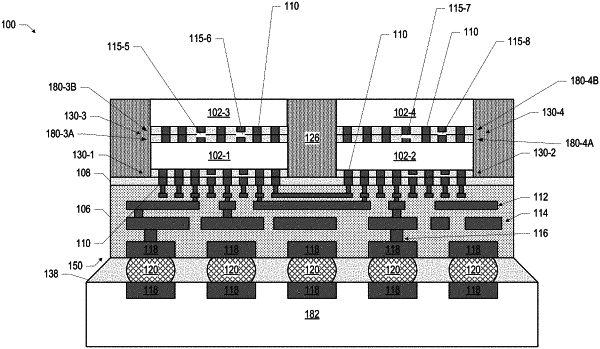| CPC H01L 24/06 (2013.01) [B81B 7/0006 (2013.01); B81B 7/007 (2013.01)] | 15 Claims |

|
1. A microelectronic assembly, comprising:
a first microelectronic component having a first direct bonding region, wherein the first direct bonding region includes first metal contacts and a first dielectric material between adjacent ones of the first metal contacts;
a second microelectronic component having a second direct bonding region, wherein the second direct bonding region includes second metal contacts and a second dielectric material between adjacent ones of the second metal contacts, wherein the first microelectronic component is coupled to the second microelectronic component by interconnects, and wherein the interconnects include individual first metal contacts in the first direct bonding region coupled to respective individual second metal contacts in the second direct bonding region; and
a void between an individual first metal contact that is not coupled to a respective individual second metal contact, wherein the void is one of a plurality of voids, the plurality of voids has a first concentration in a perimeter area of the first and second direct bonding regions and a second concentration that is less than the first concentration in an inner area of the first and second direct bonding regions.
|